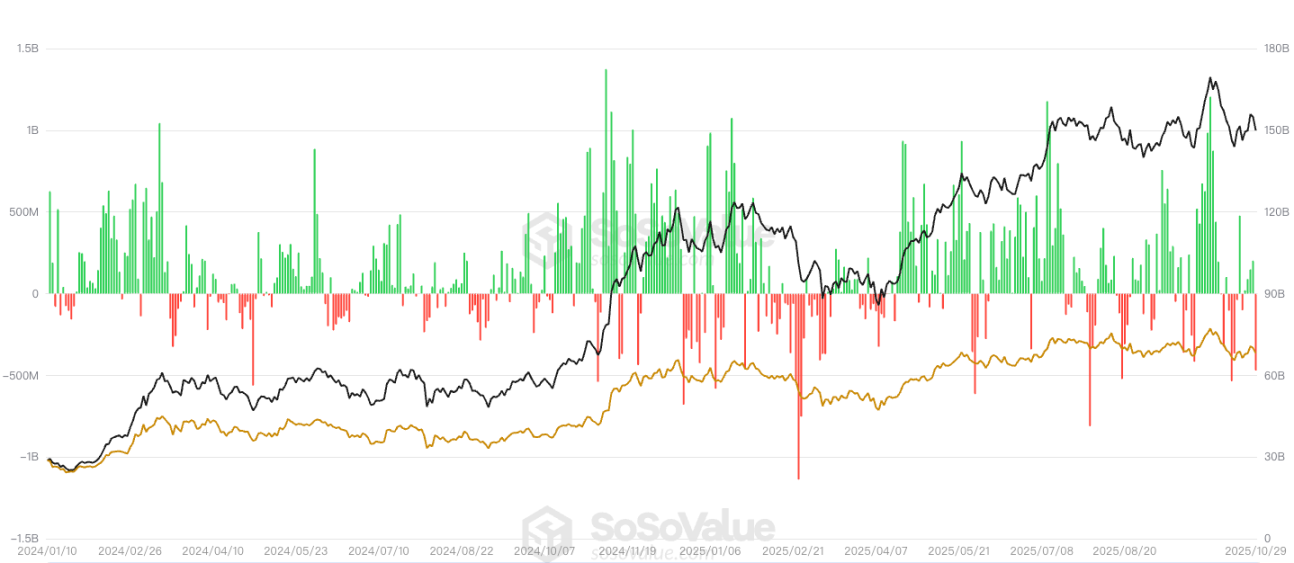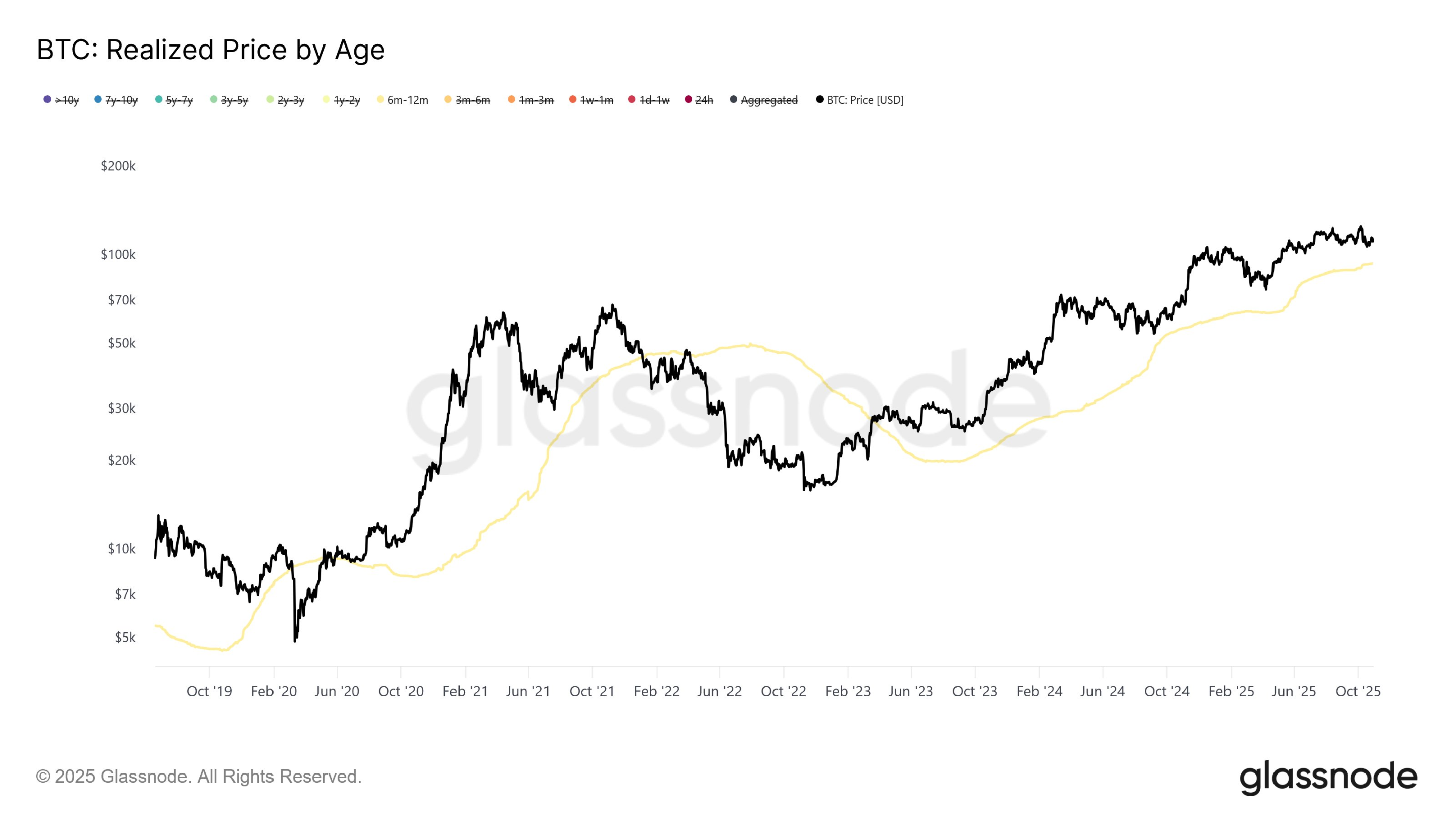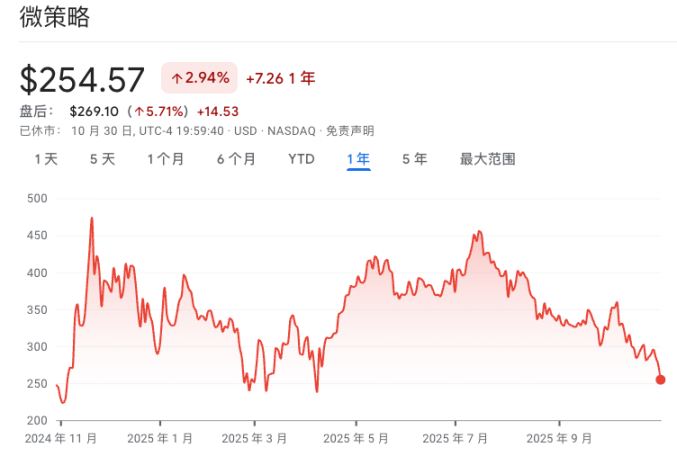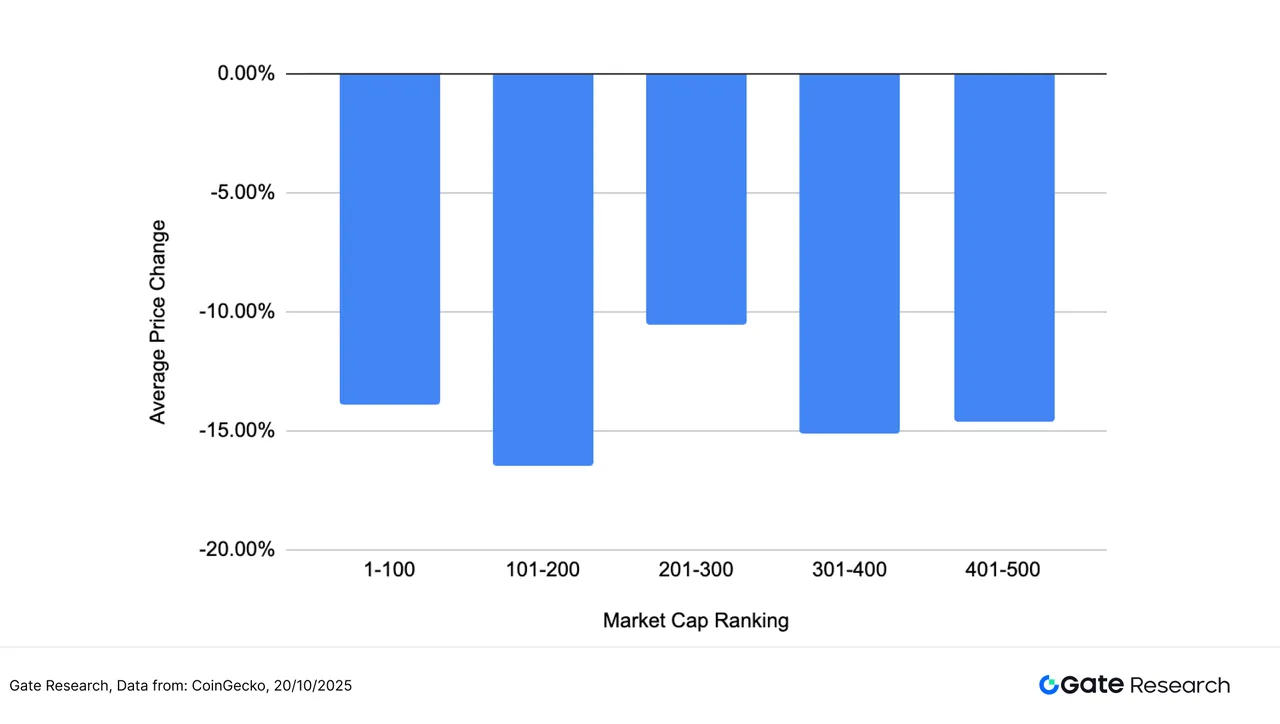Written by: ChandlerZ, Foresight News
In the early hours of October 30, the Federal Reserve announced its latest interest rate decision, lowering rates by 25 basis points as expected, bringing the federal funds rate range down to 3.75% – 4.00%, and announced the cessation of balance sheet reduction starting December 1. The market reacted mildly to the news, with the S&P 500 and Nasdaq 100 slightly rising, while gold and Bitcoin briefly narrowed their losses. However, just minutes later, Fed Chairman Powell stated at a press conference that whether to continue lowering rates in December was "not set in stone," indicating clear divisions within the committee.
This statement quickly changed market sentiment. U.S. stocks, gold, Bitcoin, and U.S. Treasuries all fell simultaneously, while the dollar rose.
On the 31st, this sentiment continued to spread, with Bitcoin plunging from around $111,500 to $106,000, and Ethereum experiencing a deeper decline, dropping below $3,700 at its lowest. According to CoinAnk data, over the past 24 hours, the total liquidation across the network reached $1.035 billion, with long positions liquidating $923 million and short positions liquidating $111 million. Among these, Bitcoin saw liquidations of $416 million, while Ethereum had $193 million in liquidations.
On the other hand, by the close of U.S. markets, all three major U.S. stock indices fell, with the Nasdaq leading the decline. Cryptocurrency-related stocks also saw widespread losses, with Coinbase (COIN) down 5.77%, Circle (CRCL) down 6.85%, Strategy (MSTR) down 7.55%, Bitmine (BMNR) down 10.47%, SharpLink Gaming (SBET) down 6.17%, and American Bitcoin (ABTC) down 6.02%, among others.
After the excitement at the beginning of the month, the market shifted from a "rising" mode to a "consolidation" mode. Funds are expected to exit, narratives are not continuing, and arbitrage opportunities are diminishing. For most holders, this rhythm means prioritizing profit-taking and defensive logic.
Cryptocurrency Market Faces Setbacks, Black Swan Shadow Lingers
In fact, the current round of volatility had long been signaled. Since the "Black Swan Crash" on October 11, Bitcoin's performance has not fully recovered. In just 72 hours, nearly $40 billion in market value evaporated, with total liquidations exceeding $11 billion, and the fear index briefly dropping to 22. The subsequent rebound faced resistance at $116,000, until Powell's speech this week triggered a new wave of panic.
In terms of ETF fund flows, according to SoSoValue data, Bitcoin spot ETFs saw a total net outflow of $488 million yesterday, with none of the twelve ETFs experiencing net inflows. The Bitcoin spot ETF with the largest single-day net outflow was Blackrock's ETF IBIT, which had a net outflow of $291 million, bringing its historical total net inflow to $65.052 billion. The second largest was Ark Invest and 21Shares' ETF ARKB, with a single-day net outflow of $65.619 million, and a historical total net inflow of $2.053 billion.
Ethereum spot ETFs had a total net outflow of $184 million, with none of the nine ETFs experiencing net inflows. The Ethereum spot ETF with the largest single-day net outflow was Blackrock's ETF ETHA, which had a net outflow of $118 million, with a historical total net inflow of $14.206 billion. The second largest was Bitwise ETF ETHW, with a single-day net outflow of $31.144 million, and a historical total net inflow of $399 million.

According to Glassnode analysis, since mid-July, long-term Bitcoin holders have maintained a steady selling pressure, continuously applying selling pressure that has kept the market below $126,000. Data shows that the average daily selling by long-term holders increased from about $1 billion (7-day moving average) in mid-July to $2-3 billion at the beginning of October. Unlike the previous high-selling phase in this bull market, the current distribution pattern shows a gradual and sustained characteristic rather than a sharp short-term sell-off.

Further analysis by holding period shows that investors holding for 6-12 months contributed over 50% of the recent selling pressure, particularly evident in the later stages of price peaks. Near Bitcoin's historical high of $126,000, this group’s average daily selling reached $648 million (7-day moving average), more than five times the early benchmark level in 2025.
Data also reveals that these investors primarily accumulated Bitcoin in October 2024 (during the U.S. election) to April 2025, with a cost basis between $70,000 and $96,000, averaging around $93,000. Analysts point out that if Bitcoin's price falls below the $93,000 - $96,000 range, it will create maximum loss pressure for this group.
Some market participants believe that the crash on October 11 and its subsequent correction have formed a "small cycle top," and Powell's remarks this week reinforced the short-term defensive logic.
Liquidity Repricing
After the Black Swan crash, the cryptocurrency market entered a period of deep restructuring. The two main lines that supported the boom of altcoins in recent years, retail high-frequency trading and institutional speculative support, are both collapsing simultaneously. Market makers are deleveraging, VCs are pausing primary market investments, and retail investors are withdrawing from the market after consecutive liquidations, leading to a near-dry liquidity situation.
Bitcoin and Ethereum have re-emerged as the dominant assets for liquidity, while the price discovery mechanism for long-tail tokens has failed, forcing market capitalization and narratives to retreat. Aside from a few infrastructure projects with real cash flow and user bases, such as stablecoin issuance, RWA asset mapping, or payment settlement systems, other altcoins are in a state of long-term chip dilution and exhausted buying pressure. The retreat of altcoins reflects a contraction of the entire funding logic. The market is transitioning from story-based pricing to cash flow-based pricing, and capital is no longer paying for concepts. The value of tokens has lost its reason for sustained growth, and narratives have become the exclusive privilege of a few core projects.
Moreover, the DAT model that was popular in the first half of this year is essentially a form of structured financing that exchanges tokens for equity. Its feasibility relies on one premise: that there are buyers in the secondary market willing to take on the risk. When incremental liquidity dries up, this closed loop collapses. Project teams still want to raise funds, and financial advisors are still facilitating transactions, but buyers have disappeared. Strategy announced its Q3 2025 financial report, showing a net profit of $2.8 billion; BTC holdings increased from 597,325 to 640,031; however, its stock price fell nearly 14% during the same period, and its market premium relative to BTC holdings narrowed.

Long-tail DATs have seen almost no transactions, and new financing has turned into a hedge against on-chain token rights versus book equity. For example, Nasdaq-listed Litecoin treasury company Lite Strategy announced that its board has approved a stock buyback plan of up to $25 million, with the timing and specific number of shares to be repurchased depending on market conditions. For project teams and early investors, this means that short-term fundraising can still be completed; for secondary market investors, it means there is almost no exit path. DATs lacking cash flow support, audit custody, and buyback mechanisms are gradually exposing characteristics of circular pledging and inefficiency.
On a deeper level, the bursting of this bubble represents a credit rupture between the primary and secondary cryptocurrency markets. Without real buying pressure, the so-called on-chain treasury valuation loses its meaning. Capital's patience is wearing thin, tokens no longer possess financing functions, and DATs have shifted from innovation to risk.
Short-term Volatility, Long-term Easing Pattern Hard to Change
The volatility in the cryptocurrency market is currently undergoing a repricing process. Powell's remarks caused a sharp turn in short-term market sentiment, but this shock feels more like an expectation correction rather than a trend reversal. Barclays' latest report also confirms this judgment: Powell's true intention is to break the market's excessive expectations for inevitable rate cuts, rather than returning to a hawkish stance. In fact, macro data still provides conditions for continued easing, with labor demand continuing to slow, core inflation falling close to the 2% target, and a consensus forming around cooling economic momentum.
From a cyclical perspective, the Federal Reserve's policy space is reopening. The current interest rate range of 3.75%–4.00% is significantly above the core inflation level, indicating that monetary policy remains tight; however, against the backdrop of a generally slowing global economy, the marginal benefits of maintaining excessively high rates are diminishing. The upcoming question is not whether to cut rates, but when to restart stronger easing measures. With the cessation of balance sheet reduction officially ending in December, the possibility of the Federal Reserve returning to quantitative easing will gradually increase.
For the cryptocurrency market, this means that the mid-term liquidity environment remains friendly. Although short-term volatility is severe, the market's liquidity anchor still points towards easing. Improvements in dollar liquidity will boost risk appetite, and asset pricing will be revised upward again. Historical experience shows that after each round of easing begins, Bitcoin typically experiences a trend rebound 1 to 2 quarters later. The current adjustment is more likely to be a buildup of space for the next market phase.
From a funding structure perspective, institutions are still waiting for macro confirmation, namely stable inflation within target ranges, significant cooling in employment, and the Federal Reserve signaling rate cuts. Once this combination appears, the rhythm of ETF inflows and futures long position rebuilding will restart. For retail and small-cap investors, the real opportunity lies not in short-term panic but in the second wave of inflows after the easing cycle is established.
Whether it is the Federal Reserve's policy focus or institutions' asset allocation logic, both are transitioning from the end of rate hikes to the beginning of easing. Short-term volatility is inevitable, but the long-term return of liquidity has become an unstoppable trend. For investors still in the market, the most important thing is not to predict the bottom but to ensure they can endure until the day quantitative easing restarts. At that time, Bitcoin and the entire cryptocurrency market will welcome a new pricing cycle amid the recovery of liquidity.
免责声明:本文章仅代表作者个人观点,不代表本平台的立场和观点。本文章仅供信息分享,不构成对任何人的任何投资建议。用户与作者之间的任何争议,与本平台无关。如网页中刊载的文章或图片涉及侵权,请提供相关的权利证明和身份证明发送邮件到support@aicoin.com,本平台相关工作人员将会进行核查。




